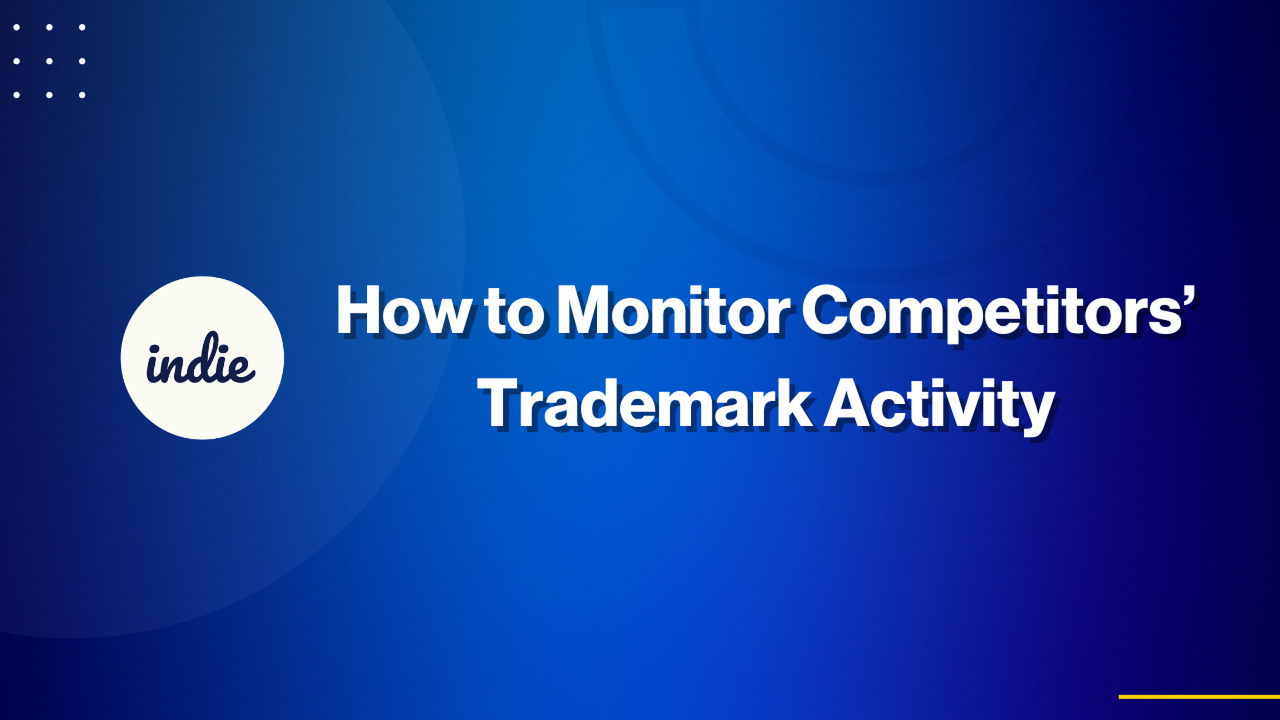Keeping an eye on your competitors is a smart part of any business strategy, but it’s especially critical when it comes to trademarks. Monitoring your competitors’ trademark activity helps you spot potential threats, protect your brand, and stay competitive in your industry.
In this guide, you’ll learn how to track your competitors’ trademarks effectively, why it matters more than ever in 2025, and the best tools and methods to stay protected.
Why Monitor Competitors’ Trademarks?
Every year, thousands of new trademark applications flood the United States Patent and Trademark Office (USPTO). In 2023, the USPTO recorded over 737,000 trademark application classes, which means countless new brands and products are entering the market each week.
If you’re not watching your competitors’ trademark filings, you risk missing out on:
- Identifying potential infringement on your brand
- Spotting rebranding trends in your market
- Opposing trademarks that are confusingly similar to yours
- Understanding how others in your industry are protecting their intellectual property
Staying informed lets you take action early and safeguard your brand’s market position.
Step 1: Identify Key Competitors to Watch
Start by listing the competitors that could impact your business. This list should include:
- Direct competitors in your industry
- Major industry leaders or trendsetters
- Companies expanding into your niche
- Businesses with a history of copying or infringing on others
You don’t need to monitor every company—focus on those with the most potential to affect your brand.
Step 2: Use USPTO’s Trademark Search Tools
The USPTO provides free tools to search and monitor trademark filings:
- Trademark Electronic Search System (TESS): Search by owner name, brand name, or keyword.
- Trademark Status & Document Retrieval (TSDR): Track the status of trademark applications, view histories, and access official documents.
Set a recurring reminder—monthly or quarterly—to manually check these databases for updates related to your competitors.
Step 3: Set Up Alerts with Google and AI Tools
Automate your monitoring with tools like Google Alerts. Set alerts for:
- “[Competitor Name] trademark”
- “[Competitor Name] new product”
- “[Competitor Name] brand launch”
Additionally, AI-powered platforms such as TrademarkNow and Corsearch can send automatic notifications when new filings match your chosen criteria, such as specific industries, keywords, or product categories.
Step 4: Use a Trademark Watch Service
For comprehensive protection, consider subscribing to a trademark watch service. These services provide:
- Daily or weekly monitoring of trademark filings
- Alerts for names or logos similar to yours
- Legal risk assessments
- International monitoring
Some of the most trusted providers include:
- Clarivate (CompuMark)
- Corsearch
- Markify
- WIPO Global Brand Database
Trademark watch services have grown in sophistication and now offer global coverage, with WIPO’s TMview database monitoring filings across more than 80 intellectual property offices worldwide.
Step 5: Track Industry-Wide Trademark Applications
Monitoring isn’t just about specific competitors. You should also track new trademark filings across your entire industry to detect emerging trends.
You can search by:
- Keywords: For example, “eco skincare” or “crypto wallet.”
- Trademark Class: Such as Class 25 for clothing or Class 9 for tech gadgets.
- Filing Date: Sort applications by the most recent filings to stay updated.
This broad view helps you identify potential overlaps before they become legal problems.
Step 6: Monitor the USPTO Official Gazette
The USPTO publishes the Official Gazette every week, typically on Tuesdays. This publication lists newly approved trademark applications that are open for public opposition.
You have a 30-day window from the date of publication to oppose a trademark application if you believe it is too similar to your own.
Best practices include:
- Checking the Gazette weekly
- Filtering by keyword or class
- Flagging any marks that might cause consumer confusion with your brand
If you identify a concerning application, consult your trademark attorney immediately about filing a Notice of Opposition.
Step 7: Watch for Common Infringement Signs
Not every competitor will file a trademark application. Some might still infringe by:
- Using a brand name or logo similar to yours
- Launching products that imitate your designs or trademarks
- Using your trademark in online ads or on social media
Use tools like Google Alerts, social media monitoring platforms, and regular brand audits to detect and address unauthorized use.
Step 8: Respond Quickly to Threats
When you spot a potential threat, fast action is critical. Here are some common steps to protect your trademark:
- Send a cease-and-desist letter: A formal request to stop infringing use.
- File a Letter of Protest: Alert the USPTO to evidence that a pending appli

